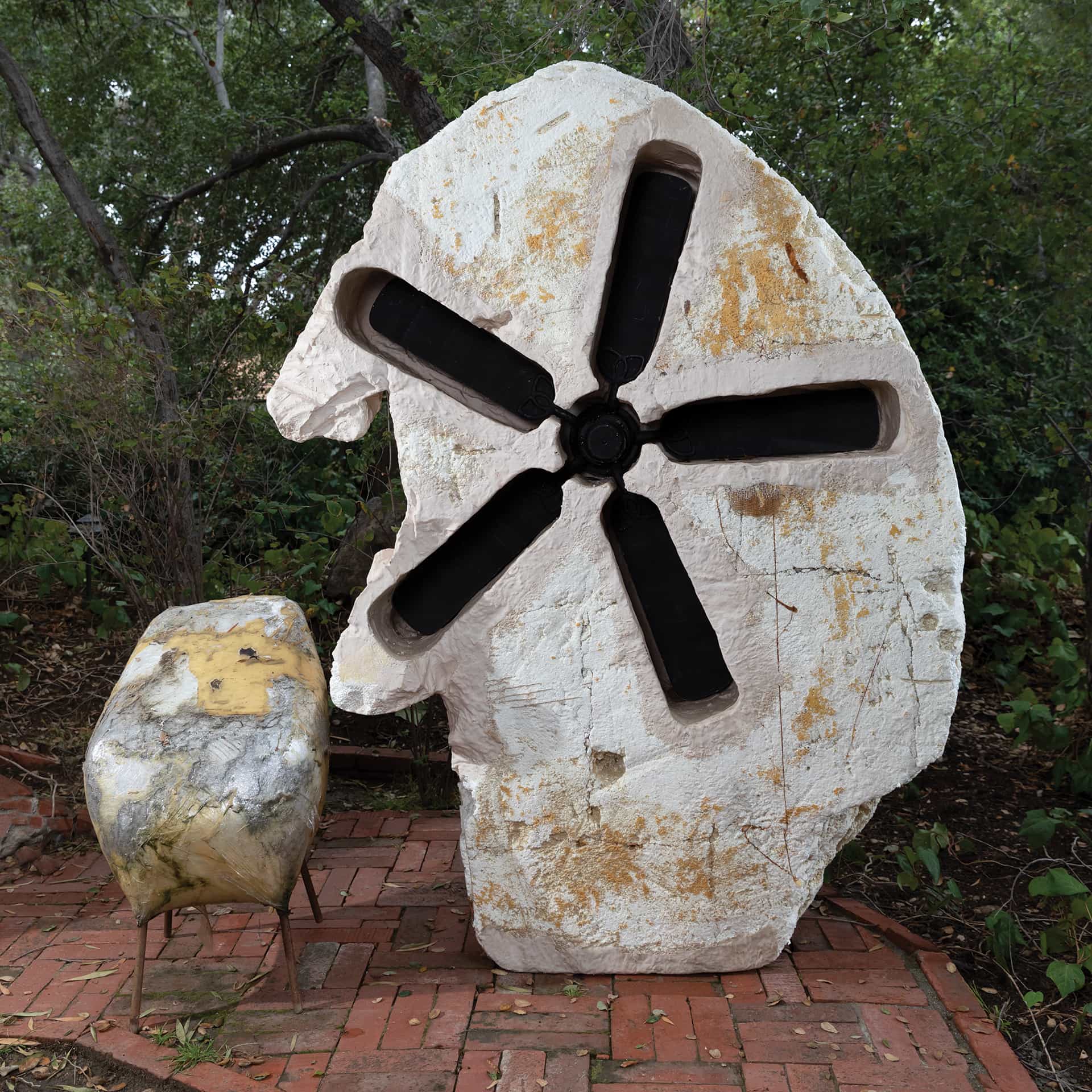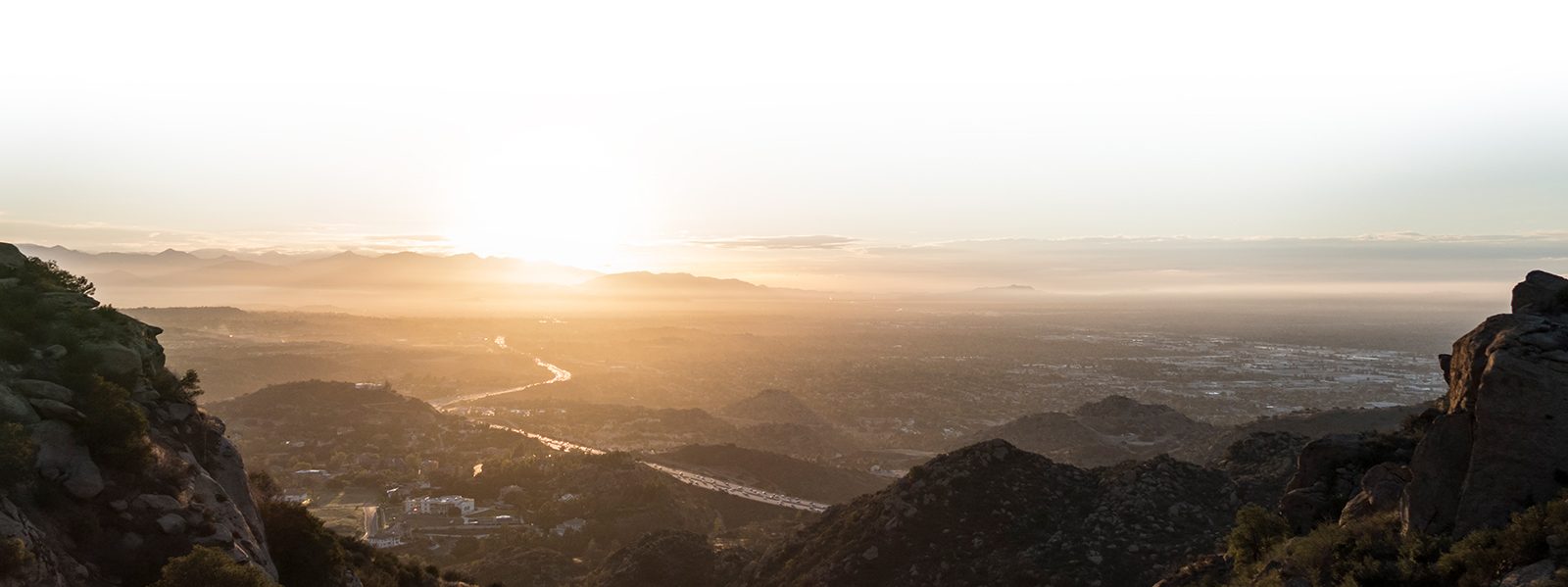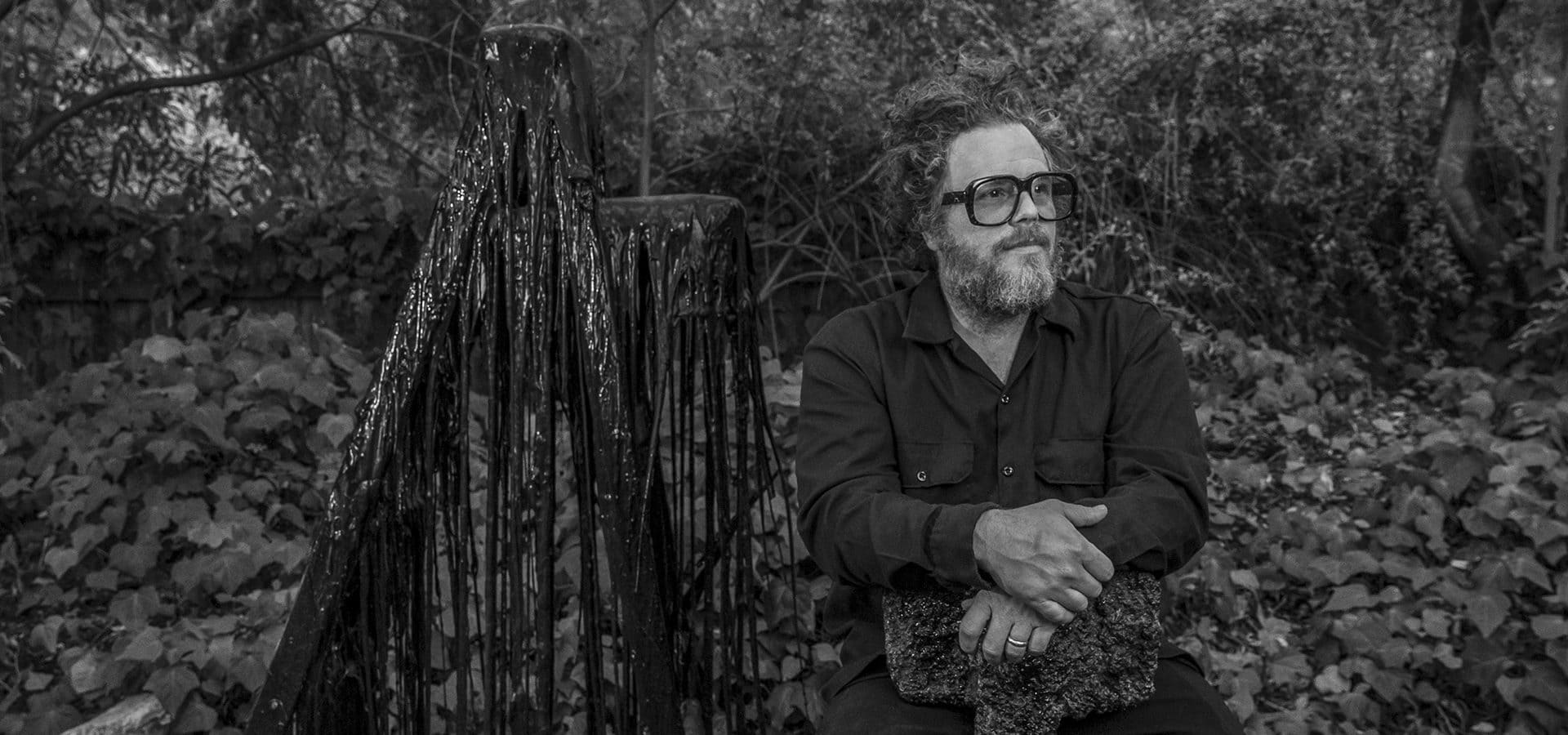For artist Christian Tedeschi, sculpture can take many forms. It can be an old door with salami covering the window, which shimmers like stained glass. It can be a pitchfork he has found, encased in plexiglass, or a crushed beer can cast in resin. His sense of humor and enthusiasm for creation is evident in all of his work—an ethos he tries to impart to the students he teaches sculpture to as an associate professor at Cal State Northridge.
Christian has lived a life of a struggling artist—until recently. He recently moved into a rambling, historic stone cottage in a wooded area of Tujunga with his wife, the artist Erika Ostrander. “I’ve always only lived in warehouses, studios and things like that—a car,” he says. “But now I’m domesticated in a way since getting married, and it’s really nice being out of the city. Walking down the street, people wave!”
An avid walker, he spends hours walking the hills that ring his home, collecting found materials like leaves and acorns to use in his works along with his favorite manmade materials including resin, woven speaker wires and salami.
It’s a far cry from his childhood growing up in New Jersey, near Philadelphia. One of four children in a Catholic-Italian family, the former altar boy experienced a troubled youth. “I was a troublemaker,” he says. “My parents didn’t know what to do with me. When I was 17, they had me exorcised. They thought I was possessed by the devil, which was a little bit of a wake-up call for me.”
Christian was happiest in the art studio at high school, skipping class so that he could paint and throw pots. He also loved his family basement, where he would go when he was punished. “Every time I got in trouble at school or punished by my parents, I loved it because I just wanted to be in there and just create something. My mom at some point realized, ‘Maybe you would like to go to school for art.’”
“I think that there’s something interesting about LA, which feels like somewhere in between Detroit and Hawaii. It’s kind of gritty, but then there’s still palm trees.”
Once enrolled at Philadelphia’s University of the Arts, he found his calling. “My teachers really liked me there. I got along really well with everyone else, like, it was like I found my home, my people,” he remembers.
For graduate school, Christian went to the Cranbrook Academy of Art outside of Detroit, where he studied with noted ceramicist Tony Hepburn. After graduating, he taught and worked in Detroit, living in a huge studio in a rough neighborhood filled with abandoned houses that were health and safety hazards, not to mention emotional barriers for residents who could not convince the city to tear them down.
“I started painting these houses that were dilapidated, that were uninhabitable. I started painting them bright orange—me and a couple friends. And then like a week later, the city tore it down. And we’re like, huh? And everyone in the neighborhood was super excited.”
Christian kept painting uninhabitable buildings. In 2006, with the Super Bowl coming to town and the government in Detroit attempting to “clean up the city,” he made a grand artistic statement. In the middle of the night, he and a group of friends and Cranbrook students painted an abandoned neighborhood of eight houses that could be seen at the intersection of two major freeways. It made national news, and Detroit mayor Kwame Kilpatrick was furious.

“He was saying we were going to go to jail because it’s an act of vandalism. Every act of vandalism is 90 days in jail. We probably did like 15 houses at this time, something like that. So that was horrifying to me. And I started applying for jobs,” he says.
After a year teaching in Colorado, the artist arrived in LA to teach at Cal State Long Beach. “I think that there’s something interesting about LA, which feels like somewhere in between Detroit and Hawaii,” he says. “It’s kind of gritty, but then there’s still palm trees.”
After a stint at Long Beach, he worked for the pioneering performance artist and sculptor Chris Burden and his wife, the sculptor and installation artist Nancy Rubins, working on Burden’s iconic “Metropolis II,” now on permanent display at LACMA. He was then visiting artist at Claremont Graduate University before making his way to Cal State Northridge, where he met his wife.
Their rustic home is filled with creative endeavors both separate and joint. “Tujunga itself was founded by artists trying to escape the hustle and bustle of the city,” Christian explains. “No one wanted to be out here because everything was made out of rock. So they just started making houses and stuff out of rocks.”
While Erika often works outside, Christian creates his clever, stark pieces in the converted garage studio. “Recently I’ve made a battery out of salami. I can power an LED with it, so I’m thinking about making a chandelier or something related to it,” he says heartily.
“Nancy Rubins told me a great bit of advice, which was your art practice is like a small flame and you have to protect it. Sometimes it can go like a raging fire; sometimes it’s just a flicker. But you have to protect that and always keep that going.”
Architect May Sung Comes to The Rescue on a Studio City Reno Gone Wild
In the right hands…finally!
Join the Valley Community









